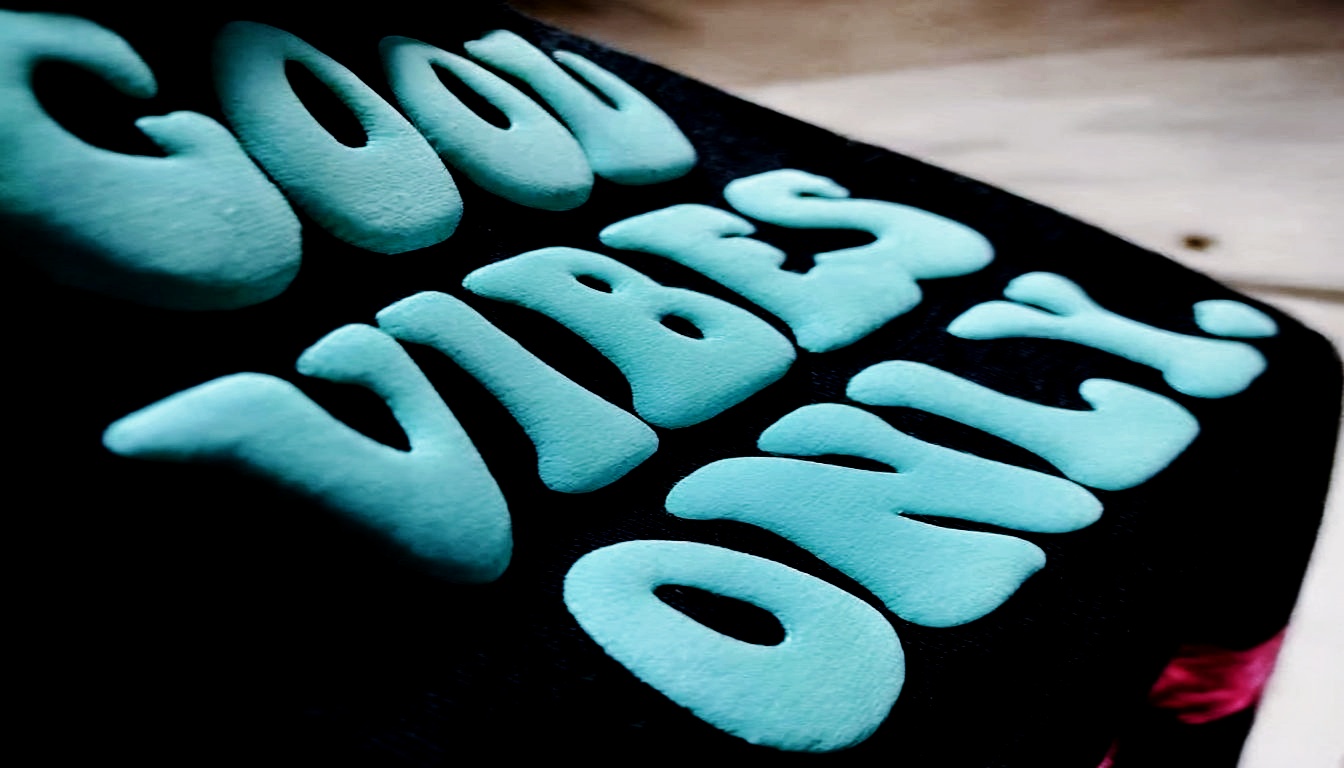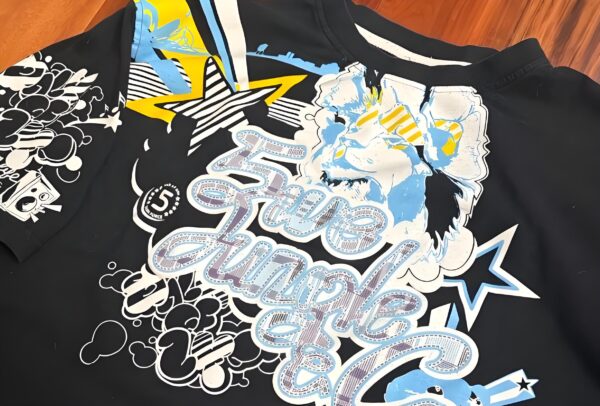The world of textile printing offers a variety of techniques to create unique and visually appealing designs. One such technique that has gained popularity in recent years is puff printing. Known for its raised, three-dimensional effect, puff screen printing adds texture and depth to designs, making them stand out on garments like T-shirts. In this article, we’ll dive into what puff print is, why it’s used, and how it can be effectively applied to create stunning apparel.
Puff Print
Puff printing refers to a specialized screen printing technique that creates a raised, three-dimensional effect on fabric. This effect is achieved by using a particular type of ink, often referred to as puff ink, which expands when exposed to heat. As the ink puffs up, it creates a soft, raised surface that adds a tactile element to the printed design.
Puff print is particularly popular in the fashion industry because it allows for the creation of bold, eye-catching designs that stand out both visually and texturally. The technique is versatile and can be used on a variety of garments, including T-shirts, hoodies, and hats. The raised texture not only enhances the aesthetic appeal of the garment but also provides a unique feel that can make a simple design more interesting.
In addition to its visual appeal, puff screen printing is also known for its durability. The raised ink is resistant to cracking and fading, making it a long-lasting option for custom apparel. This makes puff print an ideal choice for brands looking to add a premium, high-quality touch to their products.
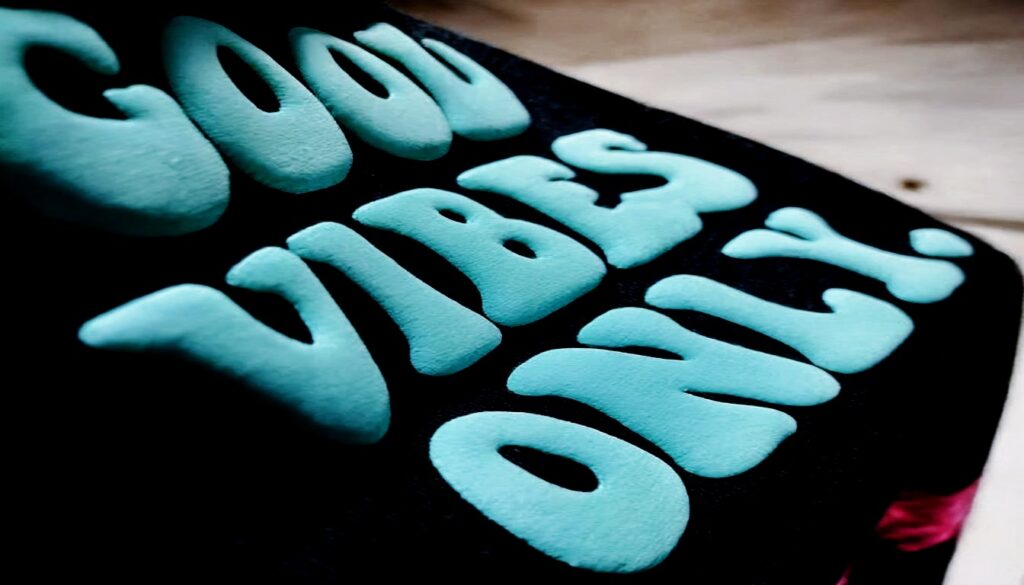
Why Should Puff Ink Be Used?
Puff ink should be used for several reasons, all of which contribute to its growing popularity in the screen printing industry.
- Enhanced Design Aesthetics:
One of the primary reasons to use puff ink is the enhanced visual appeal it provides. The three-dimensional effect created by puff printing makes designs pop, literally and figuratively. This raised effect can transform ordinary designs into something special, giving the garment a premium look and feel. Whether you’re creating custom T-shirts, promotional items, or fashion apparel, puff print can add a level of sophistication and uniqueness that flat printing techniques simply can’t achieve. - Versatility:
Puff ink is highly versatile and can be used on a wide range of fabrics, including cotton, polyester, and blends. This versatility makes it an excellent choice for various types of apparel, from casual T-shirts to more formal wear. Additionally, puff printing can be combined with other printing techniques, such as traditional screen printing or high-density printing, to create layered effects that add even more depth and texture to a design. - Durability:
Puff print designs are known for their durability. The raised ink is less prone to cracking, peeling, or fading, even after multiple washes. This durability ensures that the garment maintains its appearance over time, making puff print a reliable option for long-lasting apparel. - Brand Differentiation:
In a crowded market, standing out is essential for any brand. Puff printing allows businesses to differentiate their products by offering something unique and visually striking. Whether you’re a fashion brand looking to create a signature style or a business wanting to offer high-quality promotional items, puff print can help set your products apart from the competition. - Tactile Appeal:
The raised texture of puff print not only looks great but also feels great. This tactile element can enhance the overall customer experience, making the garment more enjoyable to wear. The softness of the puffed-up ink adds an extra dimension to the design, making it more engaging and memorable for the wearer.
How Can Puff Ink Be Used to Print T-Shirts?
Puff screen printing on T-shirts involves a multi-step process that requires precision and attention to detail. Here’s how puff ink can be used effectively to create stunning puff print shirts:
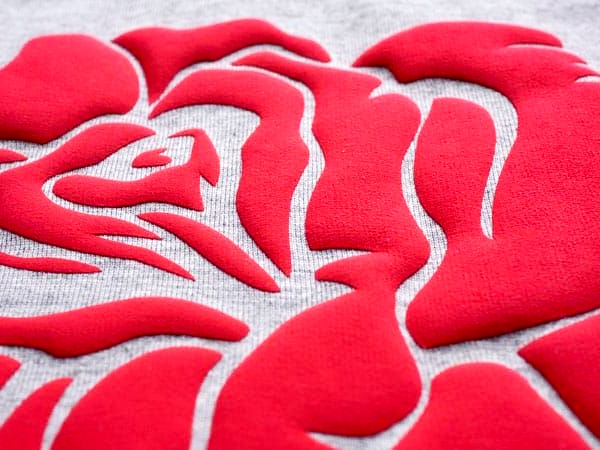
- Design Preparation:
The first step in creating a puff print shirt is designing the artwork. It’s essential to keep in mind that puff printing works best with bold, simple designs that can fully showcase the three-dimensional effect. Intricate details might not translate well with puff ink, so it’s better to use designs with larger, solid areas that will puff up effectively. - Screen Preparation:
Once the design is ready, a screen needs to be prepared for printing. This involves coating a screen with a photosensitive emulsion and then exposing it to light with the design placed on it. The areas of the screen that are exposed to light harden, while the unexposed areas (where the design is) remain soft and are washed away, creating a stencil. - Ink Application:
Puff ink is then applied to the screen, and the design is printed onto the T-shirt. This step is similar to traditional screen printing, but the key difference is the type of ink used. Puff ink contains a heat-activated additive that causes it to expand when exposed to heat. - Curing Process:
After the ink is applied, the printed T-shirt needs to go through a curing process. This typically involves passing the garment through a heat press or conveyor dryer. The heat causes the puff ink to expand and create the raised effect that characterizes puff print. The temperature and duration of heating are crucial to achieving the desired puffiness and ensuring the durability of the print. - Quality Control:
Once the T-shirts have been cured, they should be inspected for quality. It’s important to check that the puff print has expanded evenly and that there are no imperfections in the design. Any issues, such as under-puffing or over-puffing, can be addressed by adjusting the curing process. - Final Touches:
After quality control, the puff print shirts are ready for distribution. Depending on the design, additional embellishments or finishing touches can be added to enhance the overall look and feel of the garment.
By following these steps, you can create high-quality puff print shirts that stand out in the market. Puff printing offers a unique way to add texture and depth to T-shirt designs, making them more visually appealing and engaging for customers.
Puff Ink vs. High-Density Prints
While both puff ink and high-density prints offer three-dimensional effects, they are different techniques that produce distinct results. Understanding the differences between these two methods can help you decide which is best suited for your design needs.
Puff Ink:
Puff ink, as discussed earlier, is a type of screen printing ink that expands when exposed to heat, creating a soft, raised effect. This technique is ideal for designs that require a subtle, textured look. Puff prints are often softer to the touch and have a more organic, puffy appearance. This makes puff print an excellent choice for designs that aim for a more playful or casual aesthetic.
High-Density Prints:
High-density printing, on the other hand, uses a thicker ink layer to create a more rigid and sharply defined raised effect. The process involves applying multiple layers of ink to build up the height of the print, resulting in a more pronounced and structured texture. High-density prints are typically firmer and have a more sculpted appearance compared to puff prints. This method is often used for designs that require precise lines and a more industrial or graphic look.
Comparison:
- Texture and Feel: Puff prints are softer and have a more cushion-like feel, while high-density prints are more solid and rigid.
- Visual Effect: Puff printing creates a more organic, rounded look, whereas high-density printing results in sharp, defined edges.
- Design Versatility: Puff prints are better suited for playful or casual designs, while high-density prints work well for bold, graphic designs.
Choosing between puff ink and high-density printing depends on the desired effect and the type of garment being printed. For a softer, more tactile experience, puff print is the way to go. If a bold, structured design is what you’re after, high-density printing might be the better choice.
Combining Puff Print with Other Techniques
One of the advantages of puff printing is its ability to be combined with other printing techniques to create unique, multi-textured designs. Here are some popular combinations:
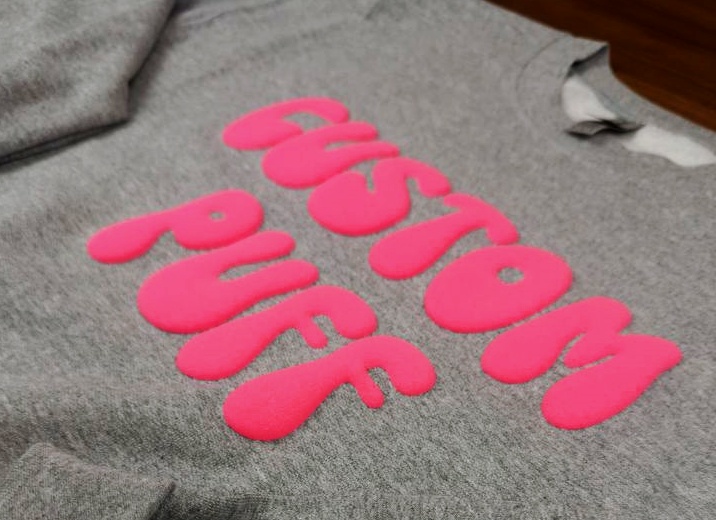
- Puff Print with Standard Screen Printing:
Combining puff print with standard screen printing can add depth to certain elements of a design while keeping other parts flat. For example, you might use puff ink for a logo or lettering while using regular screen printing ink for background patterns. This contrast between flat and raised areas can make the design more dynamic and visually interesting. - Puff Print with Metallic Ink:
Adding metallic ink to a puff print design can create a striking effect that combines texture with shimmer. The raised areas of the puff print will catch the light differently than the flat metallic areas, adding a layer of complexity to the design. This technique is often used in fashion apparel and accessories to create eye-catching, high-end products. - Puff Print with Embroidery:
Incorporating embroidery with puff printing is another way to enhance the tactile and visual appeal of a garment. The softness of the puff print contrasts with the intricate, detailed nature of embroidery, allowing for a design that is rich in texture and detail. This combination is particularly popular in custom apparel and promotional products. - Puff Print with High-Density Prints:
As mentioned earlier, puff screen printing can be combined with high-density prints to create multi-dimensional designs that have both soft and rigid elements. This technique allows for the creation of complex, layered designs that stand out for their unique texture and depth.
Conclusion
Puff screen printing is a versatile and visually striking technique that can add a new dimension to your apparel designs. By understanding how puff ink works and how it can be used in combination with other printing techniques, you can create unique, high-quality garments that stand out in the market.

